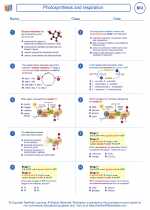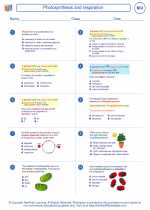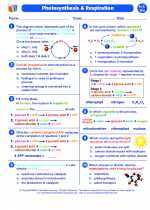Blade
In biology, the term "blade" is commonly used to refer to the flat, expanded portion of a leaf or petal. It is the main part of the leaf that is responsible for capturing sunlight and carrying out photosynthesis. The blade is typically thin and broad, providing a large surface area for maximum light absorption.
Anatomy of a Blade
The blade of a leaf is composed of various layers of cells, each with specific functions. The upper epidermis contains a waxy cuticle to reduce water loss and protect the leaf from pathogens. Beneath the upper epidermis are the palisade mesophyll cells, which are packed with chloroplasts and carry out the majority of photosynthesis. The spongy mesophyll cells are located beneath the palisade layer and facilitate gas exchange. The lower epidermis contains stomata, which are openings that allow for gas exchange and transpiration.
Functions of the Blade
The primary function of the blade is to capture sunlight and convert it into chemical energy through photosynthesis. This process involves the absorption of light by chlorophyll, the green pigment found in chloroplasts. Additionally, the blade facilitates the exchange of gases, such as carbon dioxide and oxygen, through the stomata. It also plays a role in transpiration, the loss of water vapor from the leaf surface, which helps to regulate the plant's internal water balance.
Study Guide
- Define the term "blade" in the context of plant anatomy.
- Describe the anatomical layers present in the blade of a leaf.
- Explain the role of the blade in photosynthesis and gas exchange.
- Discuss the importance of the blade in the overall function of a leaf.
- Compare and contrast the blades of different types of leaves, such as simple leaves and compound leaves.
By understanding the structure and function of the blade, you can gain a deeper appreciation for the vital role that leaves play in the survival and growth of plants.
[Blade] Related Worksheets and Study Guides:
.◂Biology Worksheets and Study Guides High School. Photosynthesis and respiration

 Worksheet/Answer key
Worksheet/Answer key
 Worksheet/Answer key
Worksheet/Answer key
 Worksheet/Answer key
Worksheet/Answer key
 Vocabulary/Answer key
Vocabulary/Answer key
 Vocabulary/Answer key
Vocabulary/Answer key
